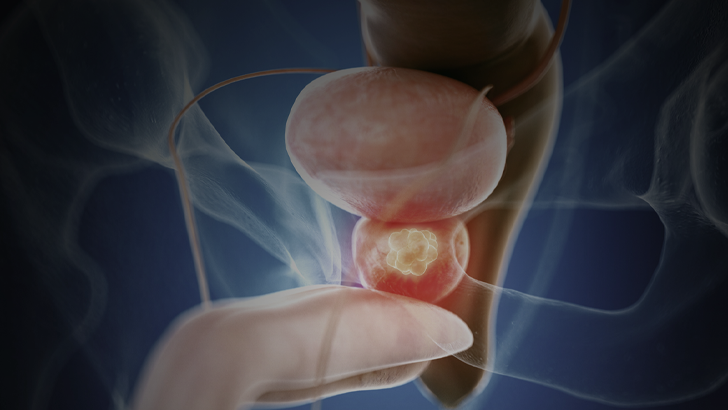Announcer:
Welcome to CME on ReachMD. This episode is part of our MinuteCE curriculum.
Prior to beginning the activity, please be sure to review the faculty and commercial support disclosure statements as well as the learning objectives.
Dr. Morgans:
Hi, my name is Alicia Morgans, and I'm a GU Medical Oncologist at Dana Farber Cancer Institute. I'm so excited to talk with you today about choosing between doublets and triplet therapy in metastatic hormone-sensitive prostate cancer patients, really considering what is the data.
So as we think about the prostate cancer treatment guidelines, and there are several, I think it's important that we recognize that the guidelines continue to evolve and they're doing so really rapidly. What we can see here on the right is that ADT in combination with either abiraterone, apalutamide, or enzalutamide, is a recommended combination, and that's category 1 evidence. And we also see ADT and docetaxel with either abiraterone or darolutamide, is also category 1, level 1 evidence. So importantly, the guidelines have changed because ADT and docetaxel couplet is no longer recommended as one of our treatment options here. And we do have those 3 preferred couplet or triplet regimens, but if you are going to use chemo-hormonal therapy with ADT and docetaxel, why not just add abiraterone or darolutamide? And that's really the message here. Let's go through the data.
So ADT and Abiraterone has been recommended since the LATITUDE trial on the left and the STAMPEDE trial on the right, included patients with metastatic hormone-sensitive prostate cancer, and showed that there was a survival benefit associated with adding Abiraterone versus ADT alone in both of these trials.
We also saw that there was an overall survival benefit to adding apalutamide or enzalutamide to ADT, versus ADT alone in the metastatic hormone-sensitive population in the TITAN, ARCHES, and ENZAMET trials, as we can see on this screen, so really consistent evidence.
We think about the triplet therapies in both the PEACE-1 and ARASENS trials, which both included patients with metastatic hormone-sensitive prostate cancer. And in PEACE-1, patients were randomized to 1 of 4 treatment arms, which included standard of care, ADT, and docetaxel, or ADT alone, standard of care with abiraterone, standard of care with radiation to the prostate, or standard of care plus radiation plus abiraterone.
In the analysis that really looked at ADT docetaxel with or without abiraterone, which was one of the planned analyses, we found that abiraterone added to the survival benefit here, particularly in high-volume patients, as we'll see in the next slide, versus ADT and docetaxel alone.
In ARASENS, we have a little bit of a simpler design, but metastatic hormone-sensitive prostate cancer patients were randomized to ADT and docetaxel with or without darolutamide. And again, we saw clear survival benefit to the addition of darolutamide to ADT and docetaxel. So let's dig in a little bit.
Here we see the overall survival for PEACE-1, which I already mentioned is prolonged when we add abiraterone to ADT and docetaxel, but when we specifically look at this by volume status in the center here of the slide, we can see that that does not seem to be really emphasized among patients with low-volume disease, and that's as the CHAARTED definition is described. Importantly, this data may be immature and so follow-up is continuing here. If we look at the high-volume patients on the right, we can see there's a clear benefit to adding abiraterone to ADT and docetaxel, versus ADT and docetaxel alone.
If we look at ARASENS, we also see that overall survival is prolonged with the addition of darolutamide to ADT and docetaxel. And if we look at that by metastatic status, by de novo metastatic versus recurrent metastatic, we can see that's consistent in both de novo and recurrent metastatic status. So really important.
So as we sum it all up, and we think about those patients who have low-volume disease, this is a summary of most of the studies, does not include ARASENS here because of when the data was released, we can see that there is a really consistent message for the majority of patients of course, because those are the low-volume patients, that ADT plus something, whether it is enzalutamide, apalutamide, abiraterone, or even docetaxel, can be helpful. But really that docetaxel benefit not emphasized in the low-volume patients here. So triplet therapy and chemotherapy, not really shown to be the best approach here, but those couplet combinations may be best. ADT and high-volume disease really shouldn't be combined, probably in chemofit patients with a chemotherapy, they are ADT, docetaxel and either darolutamide or abiraterone. As we can see here, that consistent benefit across all of these. At a minimum, the couplets also beneficial in high-volume disease.
So if we draw our conclusions, triplet therapy is the best option for chemofit patients with high-volume and de novo metastatic hormone-sensitive disease. We can consider it in low-volume patients who have high-risk features or really motivated patients. Couplet therapy is the best option for low-volume and recurrent disease, and also the best for non-chemofit patients. And shared decisions with our patients are really critical to match the right treatment with the right patient.
Choose couplet or triplet therapy for metastatic hormone-sensitive disease, ADT alone is not going to be sufficient for the majority of our patients. Thank you for your time.
Announcer:
You have been listening to CME on ReachMD. This activity is jointly provided by Global Learning Collaborative (GLC) and TotalCME, LLC. and is part of our MinuteCE curriculum.
To receive your free CME credit, or to download this activity, go to ReachMD.com/CME. Thank you for listening.


 In support of improving patient care, this activity has been planned and implemented by Global Learning Collaborative (GLC) and Total CME, LLC. GLC is jointly accredited by the American Council for Continuing Medical Education (ACCME), the Accreditation Council for Pharmacy Education (ACPE), and the American Nurses Credentialing Center (ANCC) to provide continuing education for the healthcare team.
In support of improving patient care, this activity has been planned and implemented by Global Learning Collaborative (GLC) and Total CME, LLC. GLC is jointly accredited by the American Council for Continuing Medical Education (ACCME), the Accreditation Council for Pharmacy Education (ACPE), and the American Nurses Credentialing Center (ANCC) to provide continuing education for the healthcare team.


Facebook Comments